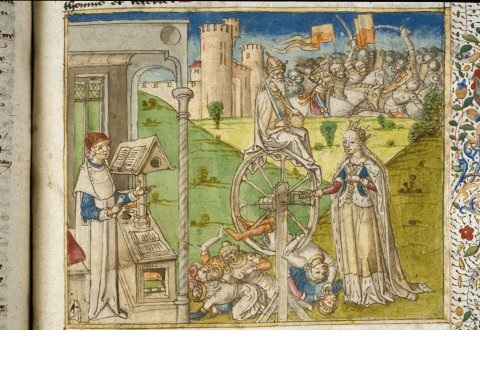«Vous faites fortune deesse…». I volti e i risvolti di Fortuna nel "Roman de la Rose"
(“Vous Faites Fortune Deesse…”: Turns and Returns of Fortune in the "Roman de la Rose")
DOI:
https://doi.org/10.13135/2038-6788/9319Keywords:
Love, Boethius, Guillaume de Lorris, Jean de Meun, Roman de la Rose, Way of LuckAbstract
In the Roman de la Rose, one of the masterpieces of medieval French literature, begun by Guillaume de Lorris around 1230 and completed by Jean de Meun between 1270 and 1280, the allegory of Fortune has a prominent place, especially in the second part of the work, where more than two thousand verses are devoted to her personification. Described by both authors as a feminine supernatural entity turning the wheel of fate whimsically and unpredictably, the figure of Fortune reflects literary and iconographic topoi from the classical tradition, reinterpreted in terms of the ethical demands of Christian culture. Fortune’s portrayal in Boethius’ Consolatio Philosophiae fixes most of the figurative and figural characters that survive to the present day. Jean de Meun’s depiction of Fortune shows the process of resemantization of didactic models as courtly symbols: in this light, the path of the Lover to the Rose ceases to be a mystical experience, an itinerarium mentis in Deum, to become an itinerarium amantis in deam. The hero undertakes a quest in the name of the God of Love who asks his faithful servant to choose between the wise way of Reason and the hazardous way of the heart (la voie de Fortune).


